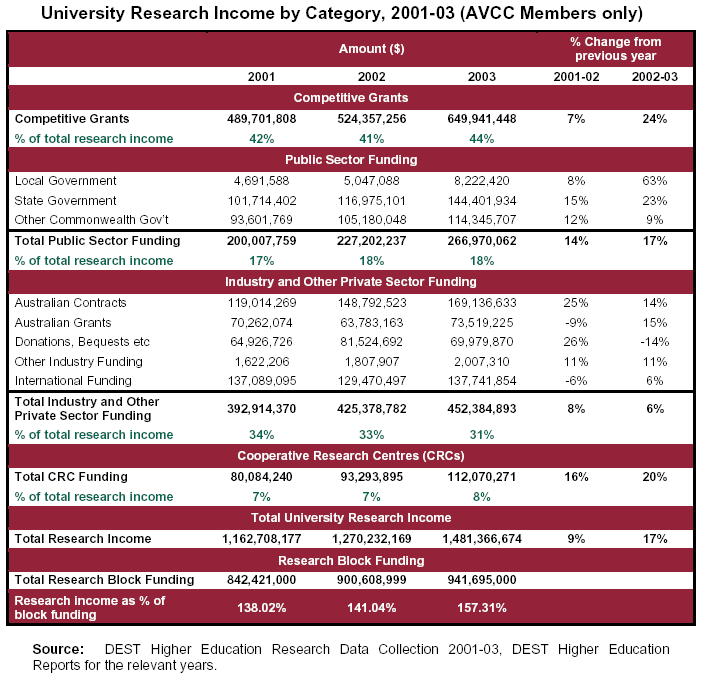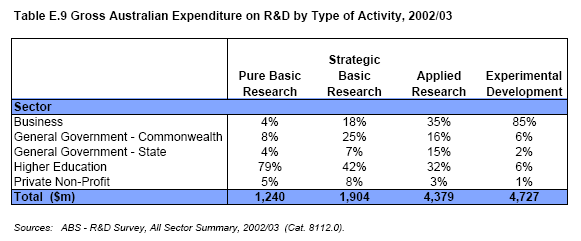|
News & Views item - February 2005 |
![]() Don't
Bite the Hand That Feeds You the Biggest Biscuit. (February 10, 2005)
Don't
Bite the Hand That Feeds You the Biggest Biscuit. (February 10, 2005)
The Australian's Dorothy Illing has an irreverent streak which at times rivals that of The New York Times' Moreen Dowd. The following appeared in Illing's "Snitch" column this week:
IT worked! Education Minister Brendan Nelson's salvo at the Australian Vice-Chancellors Committee has elicited some warm, fuzzy statements from the peak lobby. In a letter to AVCC president Di Yerbury in late December, Nelson harrumphed: "I do respect and appreciate that the AVCC will and must be an advocate for the unashamed interests of universities. However, I would appreciate recognition of initiatives that it considers to be positive and debate informed by consideration of the facts." Well, Brendan, here it is. The AVCC put out two timeless media releases on Friday, one acknowledging the benefits of the feds' new 9100 student places and the other its research package, Backing Australia's Ability. Oh, happy days.
While the matters of undergraduate student numbers and fees are of major concern to the media, the matter of research at universities doesn't evoke the same degree of interest, although Simon Marginson, director of the Centre for Research in International Education at Monash University, has told the the Australian Technology Network (ATN) of universities -- it consists of RMIT, Curtin University, the University of South Australia, the University of Technology, Sydney, and Queensland University of Technology -- that unless they "...look at things like where will the international market go, because a lot of the ATN universities have come to rely very heavily on the international students," they are in danger of being pushed to the wall. According to The Australian's Marginson agreed that although it was difficult for ATN universities to have the research output of larger and more established universities, he could see no other way for them to become more attractive globally. "[T]he only way I can see out of it is to do more research, because to be internationally regarded you need to be a respected research university, [and] if they want to be global players and big universities, then a high volume of undergraduate courses just is not going to be enough to guarantee [their] global status."
According to Perry, Marginson concluded that ATN universities needed to delve more into basic or blue-sky research rather than sticking with applied research. They could also improve their brands in other ways. "I think the answer is to leverage full-fee courses. Go for status. You've got to have a law faculty. For example, RMIT [is finding] not having a law faculty is a real problem for them now, while QUT has done really really well out of theirs."
But to return to the AVCC, while it's eating its humble pie in its press releases of early February, the material it released in its tabulations regarding Backing Australia's Ability makes for interesting reading. The devil not to coin the phrase is in the detail.
And the text begins, “This is good news,” said AVCC President Professor Di Yerbury. “The AVCC’s fundamental policy on research is that research excellence will be found in all Australian universities, with a focus on key priority areas, extending basic knowledge, and innovative research and development. “This record shows Australian universities are starting to benefit from the Government’s Backing Australia’s Ability initiatives.”
There follows the summarizing table

In fact the data are set out rather more usefully in nine tables that the AVCC has made available in pdf format.
Here for example is table 9

If the data are recast to look at the research activity in which the higher education sector is engaged we find for 2002/03
| Type of Research (OECD definitions) |
Funding ($m) |
% |
| Pure Basic Research1 | 979.6 | 28.3 |
| Strategic Basic Research2 | 799.7 | 23.1 |
| Applied Research | 1401.3 | 40.4 |
| Experimental Development | 283.7 | 8.2 |
| Total | 3464.3 | 100.0 |
So almost 50% of research carried out in Australia's universities is either fully applied research or straight out development work. Just over a quarter of research funding within the universities is for pure research, and it is the universities where almost 80% of Australian pure research is done.
The total funds available for R&D in 2002/2003 was $12,250 million (AVCC table 9) so pure research in Australia accounted for 10.1% of Australian R&D. If that gives Dr Nelson, the AVCC and the Australian Academy of Science (who continues to remain remarkably schtumm) a "warm fuzzy feeling" so be it, because despite Simon Marginson it ain't likely to change for the better for some time to come.
1Pure basic research is experimental and theoretical work undertaken to acquire new knowledge without looking for long term benefits other than the advancement of knowledge.
2Strategic basic research is experimental and theoretical work undertaken to acquire new knowledge directed into specified broad areas in the expectation of useful discoveries. It provides the broad base of knowledge necessary for the solution of recognised practical problems.